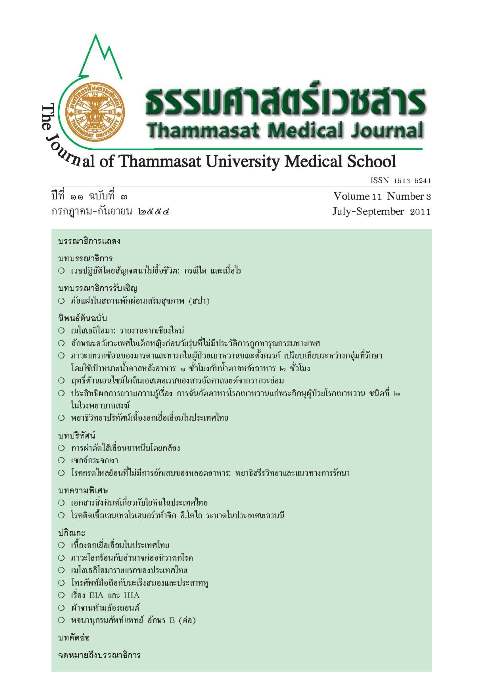Therapeutic horseback riding and hippotherapy in children with cerebral palsy
Keywords:
การออกกำลังกายด้วยการขี่ม้า, อาชาบำบัด, เด็กสมองพิการ, Therapeutic horseback riding, Hippotherapy, Cerebral palsyAbstract
Therapeutic horseback riding and hippotherapy in children with cerebral palsy can be considered as an adjunct to convention physical therapy, occupational therapy or other medical interventions. Impairments due to brain damage in children with cerebral palsy such as spasticity, muscle weakness and abnormal postural control result in abnormal movement and delayed gross motor function, compared to children with typical development. Sitting astride the horse while horse is moving facilitates head righting and equilibrium reaction. Balance will be highly required during riding the horse. Based on literature review, the improvements of the hippotherapy program of a 30-45 minutes/set, 1-2 sets/week within 6-12 weeks include decreased spasticity, stronger muscles of neck, hip and trunk, as well as improved static and dynamic balance. As a result of these improvements, gross motor function in children with cerebral palsy can be signifi cantly developed such as sitting, standi ng and walking. Hippotherapy also provides the psychological and emotional benefi ts. Riding on a horse and good interaction with horse are enjoyable which can lead to reduce stress and anxiety. Learning to control horse stimulates self-confi dence and self-esteem in children with cerebral palsy.
Key words: Therapeutic horseback riding, Hippotherapy, Cerebral palsy


